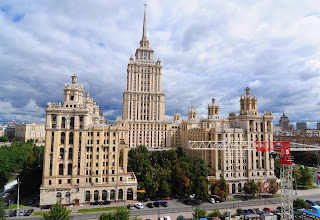First LA impressions
I'd actually been in LA very shortly before, but this time I'm with Ana, and I always notice more stuff when I have someone to comment it with (especially her). I rented a car with Dollar from LAX. I show up at the place, they give me some paperwork and point me towards a row of compact cars. As I am walking towards them, I am trying to find the license plate in the paperwork and fail to do so. I ask which car I am supposed to take and the answer is: anyone I want from that particular section. This is genius. Every single time I rented a car in the past, they gave me the keys in the office and that was it. This way instead I can choose whichever model I want, from the class I paid for. In our case we wanted to have a large trunk, so we got a car that had one, but if we had preferred a more compact car, we could have had that too. Just to get around LA the GPS inevitably directs you to a bunch of roads that are famous from movies (often movie titles). Sunset Boulevard, Mulho...


